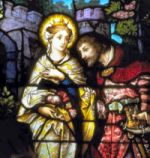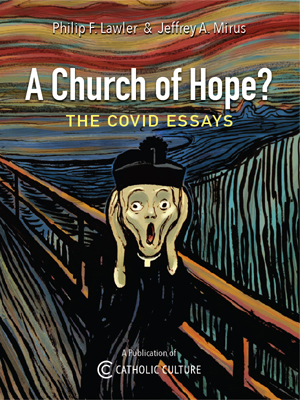Catechism of the Catholic Church
751 The word "Church" (Latin ecclesia, from the Greek ek-ka-lein, to "call out of") means a convocation or an assembly. It designates the assemblies of the people, usually for a religious purpose. 139 Ekklesia is used frequently in the Greek Old Testament for the assembly of the Chosen People before God, above all for their assembly on Mount Sinai where Israel received the Law and was established by God as his holy people. 140 By calling itself "Church," the first community of Christian believers recognized itself as heir to that assembly. In the Church, God is "calling together" his people from all the ends of the earth. The equivalent Greek term Kyriake, from which the English word Church and the German Kirche are derived, means "what belongs to the Lord."
752 In Christian usage, the word "church" designates the liturgical assembly, 141 but also the local community 142 or the whole universal community of believers. 143 These three meanings are inseparable. "The Church" is the People that God gathers in the whole world. She exists in local communities and is made real as a liturgical, above all a Eucharistic, assembly. She draws her life from the word and the Body of Christ and so herself becomes Christ's Body.
753 In Scripture, we find a host of interrelated images and figures through which Revelation speaks of the inexhaustible mystery of the Church. The images taken from the Old Testament are variations on a profound theme: the People of God. In the New Testament, all these images find a new center because Christ has become the head of this people, which henceforth is his Body. 144 Around this center are grouped images taken "from the life of the shepherd or from cultivation of the land, from the art of building or from family life and marriage." 145
754 "The Church is, accordingly, a sheepfold, the sole and necessary gateway to which is Christ. It is also the flock of which God himself foretold that he would be the shepherd, and whose sheep, even though governed by human shepherds, are unfailingly nourished and led by Christ himself, the Good Shepherd and Prince of Shepherds, who gave his life for his sheep. 146
755 "The Church is a cultivated field, the tillage of God. On that land the ancient olive tree grows whose holy roots were the prophets and in which the reconciliation of Jews and Gentiles has been brought about and will be brought about again. That land, like a choice vineyard, has been planted by the heavenly cultivator. Yet the true vine is Christ who gives life and fruitfulness to the branches, that is, to us, who through the Church remain in Christ, without whom we can do nothing. 147
756 "Often, too, the Church is called the building of God. The Lord compared himself to the stone which the builders rejected, but which was made into the comer-stone. On this foundation the Church is built by the apostles and from it the Church receives solidity and unity. This edifice has many names to describe it: the house of God in which his family dwells; the household of God in the Spirit; the dwelling-place of God among men; and, especially, the holy temple. This temple, symbolized in places of worship built out of stone, is praised by the Fathers and, not without reason, is compared in the liturgy to the Holy City, the New Jerusalem. As living stones we here on earth are built into it. It is this holy city that is seen by John as it comes down out of heaven from God when the world is made anew, prepared like a bride adorned for her husband. 148
757 "The Church, further, which is called 'that Jerusalem which is above' and 'our mother', is described as the spotless spouse of the spotless lamb. It is she whom Christ 'loved and for whom he delivered himself up that he might sanctify her.' It is she whom he unites to himself by an unbreakable alliance, and whom he constantly 'nourishes and cherishes.'" 149
Notes:
English Translation of the Cathechism of the Catholic Church for the United States of America © 1997, United States Catholic Conference, Inc.






